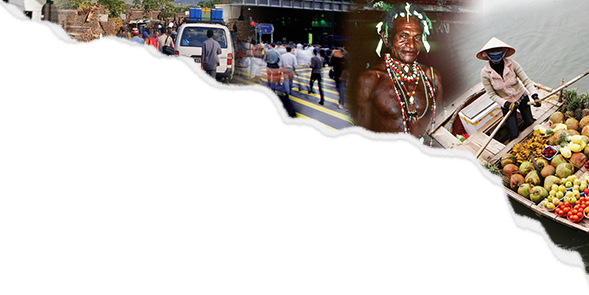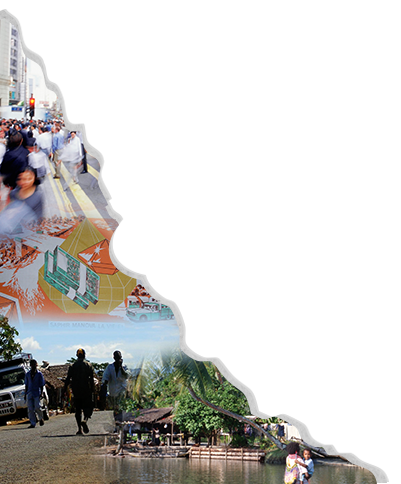This is the third post in a multi-part blog series in which Katherine Cook shares her experiences integrating digital anthropology into her teaching.
The applications for digital technology in reinventing classroom experiences and assignments are only bound by the imagination and the commitment we make as instructors to support learning and professional development. If you have already drunk the virtual kool-aid and the Four Hacks to Digitize Your Anthropology Classroom seemed a little basic, the following blog post offers up four more advanced hacks to develop more complex assignments. The benefit of increasing digital literacy is increasing control of privacy and data, independence and customization options, while also opening more doors to students for future education and employment through sustainable skill sets.
GitHub Websites for Blogging
Pros: Open source and you maintain a lot more control of your work, information, and format!
Cons: The free version is very public. It also requires HTML + CSS.
Alternatives: If time is limited, consider setting up a centralized website/blog so that the students can focus on contributing content (with just a sprinkling of code).
Blogging and website assignments have exploded onto the education scene because they get students to engage in dialogue, using multimedia and hyperlinks as networks to wider discourse while developing their personal voice and opinions. Consider replacing traditional reading assignments with blogging critical reflections, or craft a digital campaign website to tackle a contemporary issue relevant to anthropology. I have even recently benefitted from an inter-university blogging relationship, in which students from my course and those from a related course at an American university read and commented on each other’s blogs!
However, following growing concerns with information and privacy, many universities have built their own online blog communities. While these do provide a great sandbox in which to play, it means that students usually emerge with little understanding of code, more advanced functions, or how to set these types of projects up themselves when they leave university.
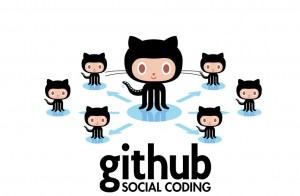 The alternative that also allows students to develop more long-term skill sets is GitHub, an open source platform for social coding and free hosting. Students can set up endless repositories, and therefore endless webpages. They can use Bootstrap templates to create functional websites quickly, and Jekyll to take the headache out of blogging. Using these platforms will expose students to code, get them using the basics on a regular basis, and show them the possibilities for creating web-based resources for free.
The alternative that also allows students to develop more long-term skill sets is GitHub, an open source platform for social coding and free hosting. Students can set up endless repositories, and therefore endless webpages. They can use Bootstrap templates to create functional websites quickly, and Jekyll to take the headache out of blogging. Using these platforms will expose students to code, get them using the basics on a regular basis, and show them the possibilities for creating web-based resources for free.
GitHub is also much more compatible with iframe-based embeds and more diverse types of media. For instance, it can host TimelineJS and Twine projects, introduced in the previous Four Hacks blog, much more seamlessly than WordPress and other blogging platforms.
Podcasts and Vlogs
Pros: Introduces wider range of digital media skills/equipment than traditional blogs.
Cons: Students tend to be more self-conscious of their voice or appearance on camera than their writing!
Many universities have audio and video equipment available for students to borrow, plus microphones and cameras on phones, tablets, and computers have improved by leaps and bounds. Open source audio and video editing software is also widely available (in addition to institutional accounts for multimedia software). Why not capitalize on this by shaking up the traditional blog format to use podcasting and v-logs as assignments?
 In a recent upper-level course on politics and ethics, students developed a podcast series on activism, collaboration, and mentorship in anthropology, using microphones borrowed from the library and their own cellphones, and editing the audio files with Audacity, an open source audio editing tool. In another course, some students recorded short audio files (<2 minutes) to include in a multi-media learning portal for a local museum (using Soundcloud or YouTube).
In a recent upper-level course on politics and ethics, students developed a podcast series on activism, collaboration, and mentorship in anthropology, using microphones borrowed from the library and their own cellphones, and editing the audio files with Audacity, an open source audio editing tool. In another course, some students recorded short audio files (<2 minutes) to include in a multi-media learning portal for a local museum (using Soundcloud or YouTube).
Or, up the ante: at the University of York, undergraduate students, under the guidance of Dr. Sara Perry, created an audioguide to engage the public in a local World War One site that was being excavated by other students in traditional field school form. At the University of Victoria, students have created digital audio soundscapes to accompany dioramas at the Royal BC Museum and ethnographies of sound in Cuba, with Dr. Alex Boudreault-Fournier.
Keep in mind though that your university or department may have strict policies on the ethics of recording audio or visual—take time to explore these in advance!
Mapping Platforms for Classes
Pros: Fast, visually stunning maps, interactive, doesn’t require GIS skills.
Cons: The platforms are constantly changing and upgrading, makes teaching and learning a bit more challenging.
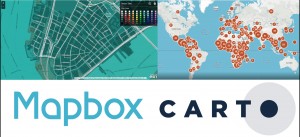 My current favourite platforms to teach with are Mapbox and Carto, with Leaflet providing a much more advanced option (but with benefits of open-source and more customization options). Mapbox and Carto both provide options for uploading geo-located data or pinning directly to maps, customizing the map tiles and labels, and interactivity—the biggest difference is how the layers and tools are organized, which is sometimes more of a personal preference rather than a difference output.
My current favourite platforms to teach with are Mapbox and Carto, with Leaflet providing a much more advanced option (but with benefits of open-source and more customization options). Mapbox and Carto both provide options for uploading geo-located data or pinning directly to maps, customizing the map tiles and labels, and interactivity—the biggest difference is how the layers and tools are organized, which is sometimes more of a personal preference rather than a difference output.
They also provide a range of options for assignments, as students can, independently or in groups, create map projects presenting advanced knowledge that doubles as an opportunity for public engagement and developing skills in communication and dissemination.
Check out Michigan State University’s Digital Atlas of Egyptian Archaeology from a course taught by Ethan Wattrall, where each student was responsible for contributing a pin to the map with an attached research summary. I have also had students create virtual walking tours of heritage sites in the local area, or map comparative ethnographic data.
Open Data for Student Researchers
Pros: Develop independent and original research while building digital literacy.
Cons: Be prepared to sink some time into this—there is a learning curve to it!
Alternatives: If you don’t have time to develop open data research, include it in lectures by showing examples of what kind of data exists and its potential—planting the seed of data reuse and sharing.
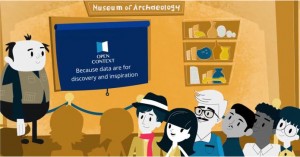 At a recent conference, I was struck by the number of times I heard that one of the greatest barriers to open data and data reuse is the lack of digital literacy across the discipline, for both students and professionals alike. Having taught upper level biological anthropology and archaeology courses using open data for independent research projects, I have learned this process is never straightforward.
At a recent conference, I was struck by the number of times I heard that one of the greatest barriers to open data and data reuse is the lack of digital literacy across the discipline, for both students and professionals alike. Having taught upper level biological anthropology and archaeology courses using open data for independent research projects, I have learned this process is never straightforward.
Part of the problem is that plain-language resources for introducing open data, digital data, and data reuse are quite limited—though many data repositories are now working to change this (i.e. DINAA, which hosts information sheets for teachers and for students). The other part of the problem is that alongside of developing digital skills, there is also a substantial attitudinal shift that often has to occur. Most students won’t have majored in anthropology to spend hours staring at spreadsheets of sometimes incoherent data—they expect to be actively examining bones and artifacts or talking to people and accumulating their own data. Managing this expectation with research realities is always a delicate balance!
Set aside time to introduce the platforms themselves, how to navigate them, and how to evaluate datasets and their potential for reuse. Set aside even more time for discussing why open data is relevant and necessary for the sustainability of our discipline, the big data movement (for better or for worse), and even dangle the carrot of the range of awards and competitions for data reuse.
The number of repositories seems to grow daily but I have found Open Context and Archaeology Data Service to be brilliant for accessing global datasets, particularly for archaeology and biological anthropology. Unfortunately, there continues to be a gap in open access data for Canada and for ethnographic data.
Open data is a huge asset in advanced research skills courses, because it provides the opportunity for students to design research questions, conduct analysis, and present their findings in a semester (cutting out the often very long data collecting stage that is usually covered in specialized lab and field courses). It can, however, also be incorporated into smaller assignments as a way to provide students with real data quickly (rather than faux assemblages that are sometimes used in this context)—for instance, in the above discussion of mapping, you can easily grab a dataset from Open Context with geo-located data that can be imported into many of the mapping platforms listed above.
Advancing Digital Anthropology
One key to making these hacks work is recognizing the value of using course time, which is already often over-stretched, to develop these skills and experiences. Some of these more advanced platforms certainly take more guidance, contact time, and support, although they also provide the opportunity for students to gain confidence in much more transferable platforms and software.
Another key is managing the expectations, fears, and anxieties students have when digital technology becomes a significant component of the curriculum, which will be the focus of the next blog post in this series!
Katherine Cook is an Assistant Teaching Professor in the Department of Anthropology at the University of Victoria, Canada. As an archaeologist and historian, her research records cemeteries in the British Atlantic to examine the construction of family, race, and religion. Follow @KatherineRCook on Twitter for more adventures in teaching and doing digital anthropology.
